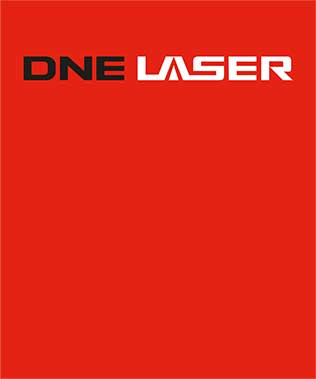Laser cutting techniques for different metal materials
Published:2020-11-17 Browse:108Editor in charge:DNE LASER
After decades of development, the use of lasers has become more and more mature, bringing tremendous changes to the global manufacturing industry, especially the sheet metal processing industry. Fiber laser cutting machine have entered our lives from the industrial field, and more and more materials are suitable for cutting. However, when using a fiber laser cutting machine to cut different materials, the cutting method used should also be appropriately adjusted to achieve the desired cutting quality.
1. Stainless steel cutting
Nitrogen is generally used for cutting stainless steel metal sheets to prevent oxidation, without burr edges, and can be welded directly without post-processing. According to the characteristics of stainless steel materials, it can accelerate the fluidity of the liquid and make the cutting efficiency higher and faster. However, the effect of cutting with oxygen may be worse than that of nitrogen, causing the end face to be black and not smooth.
2. Carbon steel cutting
Generally, oxygen will get better results when laser cutting carbon steel. While the oxygen reaction heat is used to increase the cutting efficiency in a large format, the oxide film produced will also increase the beam spectrum absorption factor of the reflective material. When using oxygen processing, there is a problem that the edges may be slightly oxidized. If users with strict requirements can use nitrogen for high-pressure cutting, of course, they can also paint the surface of the workpiece to achieve better cutting results.
3. Aluminum cutting
Aluminum is a highly reflective material among metal materials, which has high reflectivity and thermal conductivity. In recent years, laser cutting machines from many manufacturers have installed "anti-reflection devices" to adapt to aluminum cutting. Laser cutting opportunities that do not have "anti-reflection devices" have damaged their optical components. At the same time, depending on the power of the equipment, the thickness of the cut aluminum material is also different. Generally speaking, the thickness of the same equipment to cut stainless steel and carbon steel is thicker than that of high-reflection materials such as aluminum. Aluminum is also more suitable for cutting with nitrogen, and the cutting effect is good and the end surface is smooth.
4. Copper and brass cutting
Like aluminum, copper and brass are highly reflective materials and need to be cut by a laser cutting machine with an "anti-reflection device". Brass with thickness below 1mm can be cut with nitrogen; copper with thickness below 2mm can be cut.
 Bystronic (Shenzhen) Laser Technology Co., Ltd.
Bystronic (Shenzhen) Laser Technology Co., Ltd.